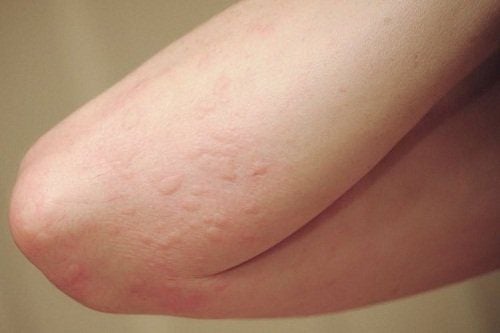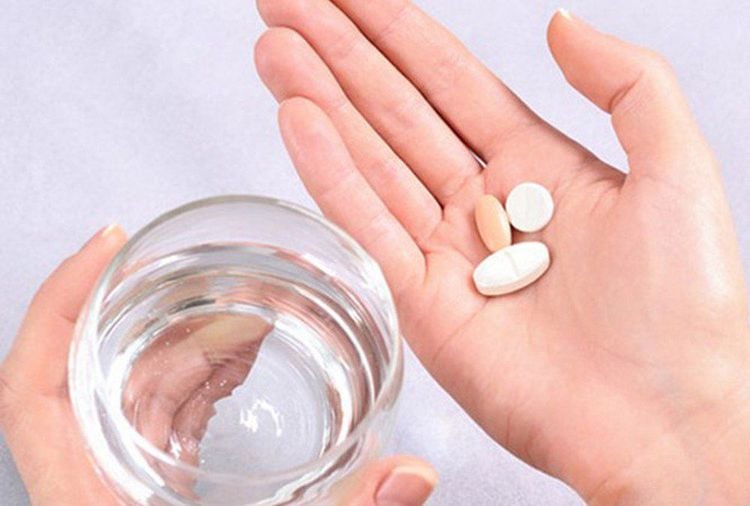This is an automatically translated article.
Crazestine belongs to the group of medicines for the treatment of allergies and hypersensitivity related to histamine. Uses of Crazestine are specifically for the treatment of chronic urticaria, allergic rhinitis, and allergic conjunctivitis.
1. What is Crazestine?
The main ingredient of Crazestine is Loratadine, which is prepared in the form of tablets, each containing 10mg of Loratadine. Crazestine is used in the treatment of allergies and histamine-related hypersensitivity conditions.2. Uses of the drug Crazestine
Crazestine helps relieve symptoms of the following conditions:
Chronic urticaria, itching. Allergic rhinitis such as: itchy nose, sneezing, runny nose. Allergic conjunctivitis such as: itchy eyes, burning in eyes, watery eyes.

Thuốc Crazestine được sử dụng trong điều trị mày đay
3. Dosage of Crazestine
Depending on the subject, age of use, the specific dose of Crazestine is as follows:
Adults and children > 12 years old: 1 Crazestine 10mg tablet/time/day. Children from 2 to 12 years old, weighing >30kg: 1 tablet of Crazestine 10mg/time/day. Children from 2 to 12 years old, weighing <30kg: 1/2 Crazestine 10mg tablet/time/day People with severe liver or kidney failure: from 1/2 - 1 Crazestine 10mg/2 tablet/time/day.
4. Are there any side effects from taking Crazestine?
When taking Crazestine can cause some side effects such as:
Fatigue, headache. Nausea, vomiting, digestive disorders. Rapid pulse, fainting. Depending on the dose used, side effects can occur from rare to common, specifically:
If Crazestine is used at the recommended dose (1/2 - 1 tablet/day), it is not found. side effects appear. If using high doses of Crazestine (more than 10mg/day, more than 1 tablet/day), users may experience symptoms such as dry mouth, headache (common), dizziness, dry nose, sneezing, conjunctivitis. fascia (less commonly), nausea, tachycardia and pulse, anaphylaxis, urticaria, depression (rare). When taking an overdose of Crazestine and having some unwanted effects mentioned above, users need to be treated with treatment to relieve symptoms immediately, and at the same time in combination with other supportive methods.
In case of acute overdose, syrup of ipeca can be used to induce vomiting and clear the stomach, then block the absorption of Loratadine with activated charcoal.
In case it is not possible to use ipeca syrup to induce vomiting because the user has fainting, convulsion or loss of vomiting reflex, or has applied but is ineffective, 0.9% NaCl solution can be used to wash the stomach, copper during endotracheal intubation to prevent gastric aspiration.

Dùng thuốc Crazestine theo chỉ định của bác sĩ
5. Notes when using Crazestine
Users of Crazestine should note the following information:
If the user has severe kidney or liver failure, it is necessary to take a low dose as recommended. Clean oral hygiene when taking medicine to limit the risk of tooth decay and dry mouth, especially in the elderly. Pregnant women need to take the drug at the lowest dose and according to the instructions and prescriptions of the doctor. Lactating mothers taking Crazestine can excrete loratadine and descarboethoxyloratadine (metabolites) in breast milk, so it is necessary to use low doses and use them only for a short time. Crazestine can interact with the following drugs and increase the concentration of Loratadine in the blood such as Cimetidine, Ketoconazole, Erythromycin, CYP3A4, .... So be careful and inform your doctor about the medicines you are taking before taking this medicine. Take Crazestine. Crazestine is used in the treatment of allergic diseases such as allergic rhinitis, allergic conjunctivitis, skin allergies, chronic urticaria with the usual dose of 1 tablet 10mg a day.
SEE MORE
Drugs to treat atopic dermatitis What is lysozyme chloride? Uses and dosages of Tatanol 500mg: Uses and dosages













